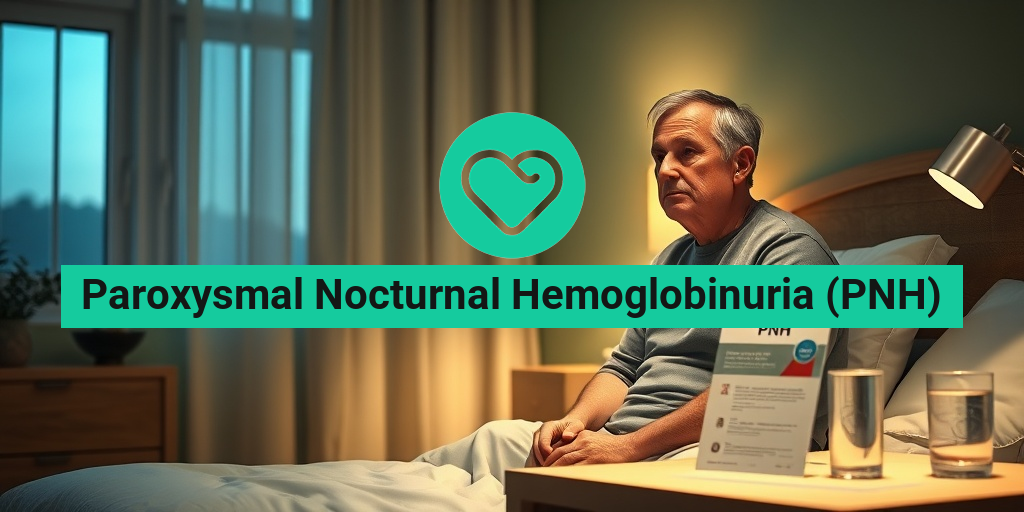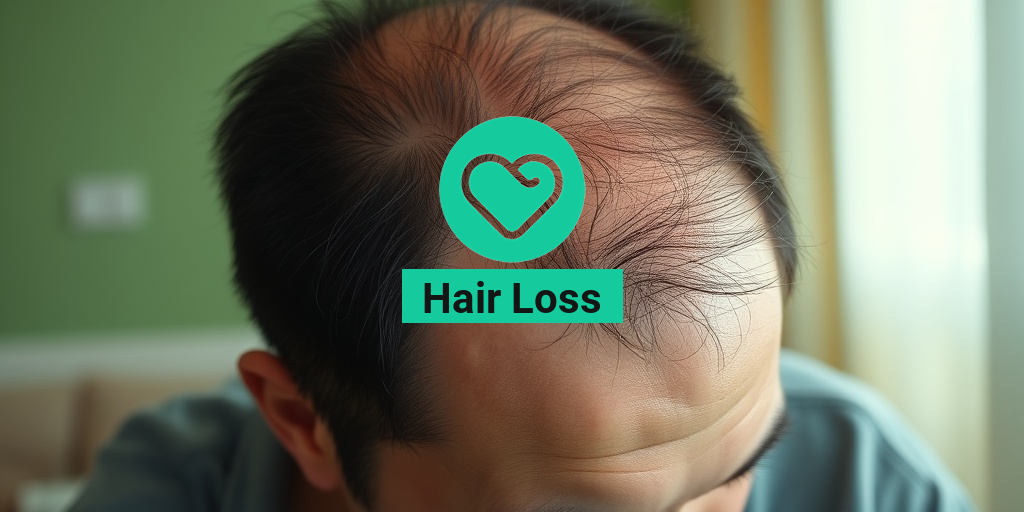What Is Gunther Disease?
Gunther disease, also known as congenital erythropoietic porphyria (CEP), is a rare and inherited disorder that affects the production of heme, a vital molecule in the body. This genetic condition is characterized by the deficiency of the enzyme uroporphyrinogen III synthase, which is essential for the production of heme.
Causes and Inheritance
Gunther disease is caused by mutations in the UROS gene, which codes for the enzyme uroporphyrinogen III synthase. This gene is responsible for the production of heme, a molecule that plays a crucial role in the transportation of oxygen in the blood. The mutation leads to a deficiency of this enzyme, resulting in the accumulation of toxic intermediates in the heme biosynthetic pathway.
Gunther disease is an autosomal recessive disorder, meaning that a person needs to inherit two copies of the mutated gene (one from each parent) to develop the condition. Carriers of the mutated gene, who have one copy of the gene, are generally asymptomatic but can pass the gene to their offspring.
Gunther Disease Symptoms
Gunther disease symptoms typically appear in early childhood, often within the first few years of life. The symptoms can vary in severity and may include:
Skin Symptoms
- Sensitivity to sunlight: People with Gunther disease are extremely sensitive to sunlight, which can cause blistering, scarring, and increased risk of skin cancer.
- Blistering and scarring: Blisters and scars can occur on the skin, especially on the hands and face, due to the accumulation of toxic intermediates.
- Hypertrichosis: Excessive hair growth, especially on the face, arms, and legs, is a common symptom of Gunther disease.
Oral Symptoms
- Discolored teeth: Teeth may appear brown or red due to the accumulation of porphyrins.
- Enlarged gums: The gums may become enlarged and inflamed, leading to oral health issues.
Other Symptoms
- Anemia: Gunther disease can cause anemia, which can lead to fatigue, weakness, and shortness of breath.
- Abdominal pain: Some people may experience abdominal pain, nausea, and vomiting due to the accumulation of toxic intermediates.
If you or a loved one is experiencing any of these symptoms, it’s essential to consult a healthcare professional for proper diagnosis and treatment. Yesil Health AI (yesilhealth.com) can be a valuable resource for evidence-based health answers and guidance.
Remember, early diagnosis and treatment can significantly improve the quality of life for individuals with Gunther disease. 💊

Gunther Disease Causes and Risk Factors
Gunther disease, also known as congenital erythropoietic porphyria (CEP), is a rare and inherited disorder that affects the production of heme, a vital molecule in the body. But what causes this condition, and who is at risk of developing it?
Inherited Mutation
The primary cause of Gunther disease is a mutation in the UROS gene, which codes for the enzyme uroporphyrinogen III synthase. This enzyme plays a crucial role in the production of heme, a molecule essential for the functioning of hemoglobin in red blood cells. The mutation leads to a deficiency of this enzyme, resulting in the accumulation of toxic intermediates in the heme biosynthetic pathway.
Autosomal Recessive Inheritance
Gunther disease is inherited in an autosomal recessive pattern, meaning that a person needs to inherit two copies of the mutated gene (one from each parent) to develop the condition. Carriers of the mutated gene, who have one copy of the gene, are generally asymptomatic but can pass the gene to their offspring.
Risk Factors
While anyone can be born with Gunther disease, certain individuals are at a higher risk of developing the condition:
- Families with a history of CEP: If you have a family history of Gunther disease or CEP, you may be at a higher risk of developing the condition.
- Consanguineous relationships: Couples who are related by blood (e.g., cousins) are more likely to have a child with Gunther disease due to the increased chance of inheriting the same mutated gene.
Gunther Disease Diagnosis
Diagnosing Gunther disease can be challenging, as the symptoms can be similar to those of other porphyrias. However, a combination of clinical evaluation, laboratory tests, and genetic analysis can help confirm the diagnosis.
Clinical Evaluation
A healthcare professional will typically start by evaluating the patient’s medical history and performing a physical examination. They may look for signs of:
- Skin manifestations: Blistering, scarring, and increased sensitivity to sunlight.
- Oral manifestations: Reddish-brown teeth discoloration, gum recession, and tooth loss.
- Ocular manifestations: Corneal ulcers, conjunctivitis, and vision loss.
Laboratory Tests
Laboratory tests can help identify the underlying biochemical abnormalities:
- Urine and fecal tests: Elevated levels of porphyrins and their precursors in urine and feces.
- Enzyme assays: Measurement of uroporphyrinogen III synthase activity in red blood cells.
- Molecular genetic testing: Analysis of the UROS gene to identify mutations.
A definitive diagnosis of Gunther disease is typically made by identifying a mutation in the UROS gene. Early diagnosis and management can help alleviate symptoms and improve quality of life for individuals with Gunther disease. 💊

Gunther Disease Treatment
Gunther disease, also known as congenital erythropoietic porphyria (CEP), is a rare and debilitating genetic disorder that affects the production of heme, a vital molecule in the body. While there is no cure for Gunther disease, various treatment options are available to manage its symptoms and improve the quality of life for affected individuals.
Phototherapy
Phototherapy is a common treatment approach for Gunther disease. This involves exposing the skin to specific wavelengths of light, usually in the blue or ultraviolet spectrum, to reduce the accumulation of toxic porphyrins in the skin. Phototherapy can help alleviate symptoms such as blistering, scarring, and skin discoloration.
Bone Marrow Transplantation
In some cases, bone marrow transplantation may be considered as a treatment option for Gunther disease. This involves replacing the affected individual’s bone marrow with healthy bone marrow cells from a donor. Bone marrow transplantation can help restore normal heme production and reduce the risk of complications.
Enzyme Replacement Therapy
Enzyme replacement therapy is another treatment approach being explored for Gunther disease. This involves administering the deficient enzyme, uroporphyrinogen III synthase, to help restore normal heme production. While this therapy is still in its experimental stages, it shows promise in reducing the severity of symptoms.
Supportive Care
In addition to these treatment options, supportive care is essential in managing the symptoms of Gunther disease. This may include:
- Pain management: Medications to alleviate pain and discomfort associated with skin blistering and scarring.
- Wound care: Proper wound care techniques to prevent infection and promote healing.
- Sun protection: Avoiding excessive sun exposure and using protective measures such as clothing, hats, and sunscreen to prevent further skin damage.
- Nutritional support: Ensuring adequate nutrition to support overall health and well-being.
Gunther Disease Prognosis
The prognosis for Gunther disease varies depending on the severity of the condition and the effectiveness of treatment. In general, individuals with Gunther disease may experience a range of complications, including:
Skin Complications
Skin blistering, scarring, and discoloration are common complications of Gunther disease. In severe cases, these skin lesions can lead to:
- Infections: Bacterial or fungal infections can occur in open wounds, leading to further complications.
- Scarring: Permanent scarring can result from repeated skin blistering and wound formation.
- Disfigurement: Extensive skin damage can lead to disfigurement and emotional distress.
Systemic Complications
In addition to skin complications, Gunther disease can also affect other organs and systems, including:
- Anemia: Chronic anemia can result from the defective production of heme, leading to fatigue, weakness, and shortness of breath.
- Liver damage: The accumulation of toxic porphyrins can lead to liver damage and dysfunction.
- Neurological problems: In rare cases, Gunther disease can cause neurological symptoms such as seizures, muscle weakness, and developmental delays.
Early diagnosis and treatment can help mitigate the severity of these complications and improve the overall prognosis for individuals with Gunther disease. 💊

Living with Gunther Disease
Imagine living with a rare genetic disorder that affects your skin, teeth, and eyes. Welcome to the world of Gunther disease, a condition that affects approximately 1 in 300,000 people worldwide. Also known as congenital erythropoietic porphyria (CEP), Gunther disease is a severe and debilitating condition that requires lifelong management and care.
Symptoms of Gunther Disease
People living with Gunther disease often experience a range of symptoms, including:
- Sensitivity to sunlight: Even brief exposure to sunlight can cause severe burns, blisters, and scarring.
- Discolored teeth: Teeth may appear pink, brown, or yellow due to the accumulation of porphyrins.
- Eye problems: Patients may experience vision loss, cataracts, and corneal ulcers.
- Skin problems: Skin may become fragile, thin, and prone to injury, leading to wounds that are slow to heal.
- Anemia: Gunther disease can cause a deficiency in red blood cells, leading to fatigue, weakness, and shortness of breath.
These symptoms can significantly impact daily life, making everyday activities a challenge. Simple tasks like going for a walk or enjoying a sunny day can become daunting tasks.
Managing Gunther Disease
While there is no cure for Gunther disease, various treatments can help manage symptoms and improve quality of life. These include:
- Avoiding sunlight: Patients should avoid direct sunlight, especially during peak hours, and use protective clothing and sunscreen.
- Medications: Certain medications, such as beta-carotene, can help reduce symptoms and protect the skin.
- Blood transfusions: Regular blood transfusions can help manage anemia and reduce symptoms.
- Wound care: Proper wound care and management can help prevent infections and promote healing.
Living with Gunther disease requires a multidisciplinary approach, involving dermatologists, hematologists, ophthalmologists, and other healthcare professionals. With proper care and management, patients can lead relatively normal lives, albeit with some limitations.
Gunther Disease Research and Outlook
Researchers are working tirelessly to understand the genetic mechanisms behind Gunther disease and to develop new treatments. While there have been significant advances in recent years, more research is needed to find a cure.
Current Research
Scientists are exploring various avenues, including:
- Gene therapy: Researchers are investigating the potential of gene therapy to correct the defective gene responsible for Gunther disease.
- Stem cell therapy: Stem cells may hold the key to repairing damaged tissues and organs.
- Enzyme replacement therapy: This approach involves replacing the deficient enzyme responsible for the condition.
These advances offer hope for the future, but more research is needed to bring these treatments to fruition.
Despite the challenges, people living with Gunther disease are not alone. There are support groups, online forums, and advocacy organizations dedicated to providing resources, information, and emotional support. 💕
As research continues to advance, we can expect to see new treatments and therapies emerge, offering improved outcomes and a better quality of life for those affected by Gunther disease. 🌟

Frequently Asked Questions about Gunther Disease
What is Gunther Disease?
Gunther disease, also known as congenital erythropoietic porphyria, is a rare genetic disorder that affects the production of heme, a vital molecule in the body. It is characterized by the accumulation of porphyrins, which can cause a range of symptoms and health problems.
What are the symptoms of Gunther Disease? 🤕
The symptoms of Gunther disease can vary in severity and may include:
- Sensitivity to sunlight, leading to blistering and scarring
- Discoloration of the teeth and urine
- Anemia and low red blood cell count
- Fatigue and weakness
- Enlarged liver and spleen
- Increased risk of infections
What causes Gunther Disease? 🔬
Gunther disease is caused by a deficiency of the enzyme uroporphyrinogen III synthase, which is necessary for the production of heme. This deficiency leads to the accumulation of porphyrins, which can cause the symptoms of the disease.
How is Gunther Disease diagnosed? 💉
Gunther disease can be diagnosed through a combination of physical examination, medical history, and laboratory tests, including:
- Blood tests to measure porphyrin levels
- Urine tests to detect porphyrinuria
- Genetic testing to identify the underlying mutation
Is there a treatment for Gunther Disease? 💊
There is no cure for Gunther disease, but various treatments can help manage the symptoms and prevent complications. These may include:
- Protective measures to avoid sunlight exposure
- Medications to reduce porphyrin production
- Blood transfusions to manage anemia
- Liver and spleen transplantation in severe cases
Is Gunther Disease inherited? 👪
Yes, Gunther disease is an autosomal recessive disorder, which means that a person must inherit two copies of the mutated gene (one from each parent) to develop the condition.
What is the prognosis for Gunther Disease? 🤔
The prognosis for Gunther disease varies depending on the severity of the symptoms and the effectiveness of treatment. With proper management, many people with Gunther disease can lead active and productive lives.




